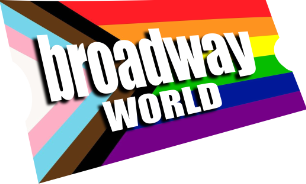Museum Of Russian Icons Announces Free Online Programs
![]()
The Museum of Russian Icons is hosting several free online programs. On Saturday, April 25, at 1 pm, there is a free webinar lecture with professor Nadieszda Kizenko:
Today I Arise: Lenten Repentance and Paschal Renewal in Russian Liturgy in the Last Years of the Empire and in a time of Pestilence; and on Saturday, May 9 at 1 pm, there is a curator's round-table webinar, Decoding the Iconography and Symbols of Easter in Russian Art. Register for the upcoming webinars by visiting www.museumofrussianicons.org. The seminars will be broadcast via Zoom, and a link will be sent to registered participants the morning of the event.
Saturday, April 25 at 1pm
"Today I Arise": Lenten Repentance and Paschal Renewal in Russian Liturgy in the Last Years of the Empire and in a time of Pestilence" with Prof. Nadieszda Kizenko
Easter eggs and Easter foods in Russia were part of a broader European tradition to prepare for the Paschal Resurrection as a spiritual spring cleaning. To celebrate Easter, people first had to cleanse themselves by going through Lent, fasting, and confessing their sins. This communal, ritualized aspect of repentance and atonement in Russia and Europe also drew on Jewish practices in the days between Rosh Hashanah and Yom Kippur: stepping back from one's usual life and reflecting on one's sins made it possible to then embrace the joyous physicality, materiality, and new life that Easter and Easter eggs represented.
This lecture examines individual objects through the prism of religious and popular observance. It explores how domestic objects connected to Easter observance-Easter eggs, Easter cake tins, and molds-take on particular meaning in a time when people are deprived of the liturgy that normally sustains them. What do material objects and domestic liturgy give the faithful in the absence of the Temple? Do we see both objects and liturgy in a different light?
Nadia Kizenko is Professor of Russian and East European history at the State University of New York, Albany. She writes and lectures often on Orthodox Christianity in the Russian empire and beyond. Look for her forthcoming book, Good for the Russian Souls? Church, State, and Sacramental Confession in the Empire from the 17th Century to 1917.
Saturday, May 9 at 1pm
Curators Roundtable: Decoding the iconography and symbols of Easter in Russian Art" with Dr. Karen Kettering, Dmitry Gurevich, and Nicholas B.A. Nicholson, Curators of Tradition & Opulence: Easter in Imperial Russia.
Easter is the most important festival in the Orthodox Christian church calendar. Symbols and artwork associated with it live on throughout the year. Join the co-curators of the exhibition Tradition & Opulence for a panel discussion of the ways objects would have functioned throughout the year. The topics include the iconography of the Resurrection, useful egg-form objects such as photograph frames, clocks, and cosmetic cases by Fabergé and his competitors, and how the Romanov family's support of the Red Cross inspired a wealth of art and material culture, including two of the famous Fabergé Imperial Easter eggs.In addition, there are virtual tours and other online educational opportunities for the whole family. For more information on these programs, visit the website at www.museumofrussianicons.org.
Comments
Videos
